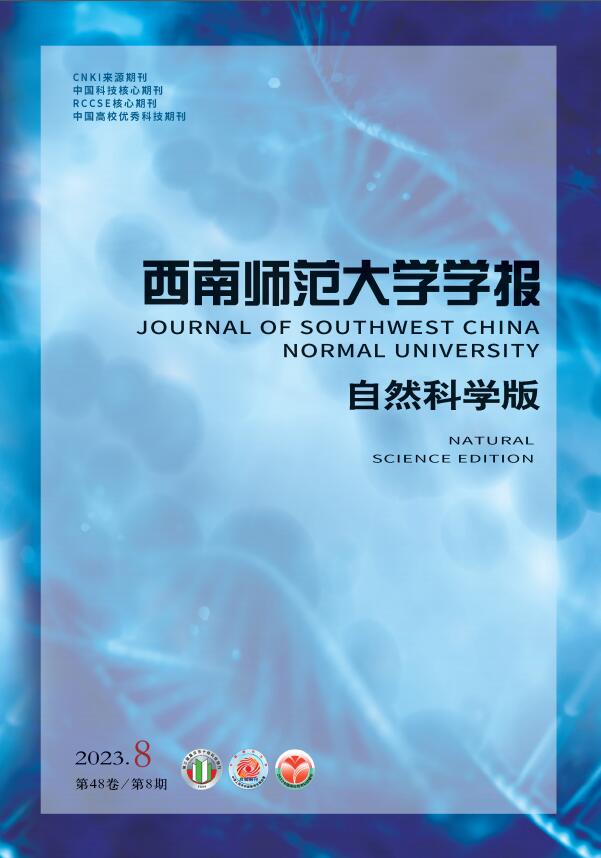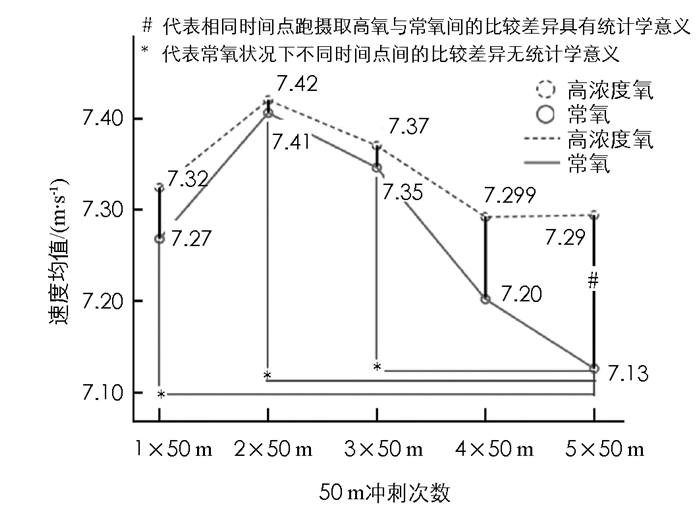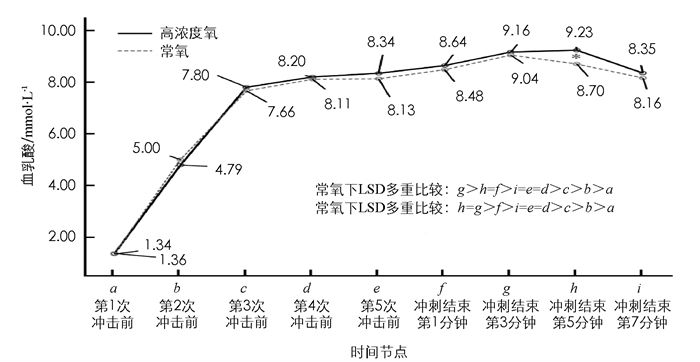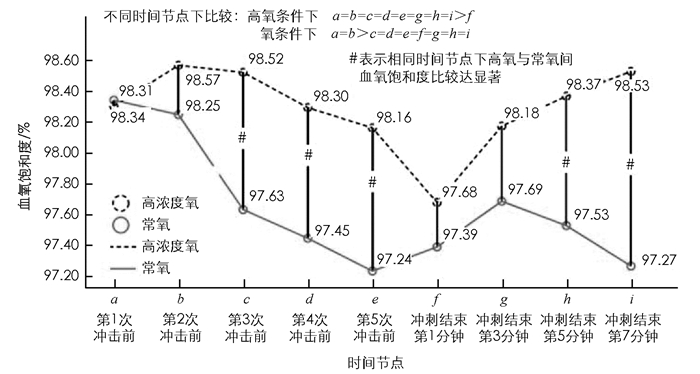-
个体在长期训练过程中身体内部环境会产生极大的变化,生理机能亦可能在过劳刺激下,造成其无法持久保持一定的强度负荷,或需要更久的休息时间使身体机能和能源物质恢复至剧烈运动前的状态[1-2].影响运动表现的因素众多,而“跟着疲劳感觉走”的被动训练方式被认为极不科学,它无法确保选手能获取较高的训练质量.然而,高强度竞赛及运动训练必然引发机体疲劳,无论是生理或心理方面,若疲劳不适时执意继续运动,势必造成疲劳累积,进一步引发身体机能衰退,甚至造成疲劳后的运动伤害;而消除疲劳效率与恢复过程时间的长短,都将影响运动员下一次比赛成绩[3-4].故在竞争激烈的竞技运动领域,能够有效促进竞技运动表现或运动结束后疲劳与能量的恢复速度,进而提升训练效果及运动表现,一直是运动科学探讨的重要课题.
有研究指出,在相同心跳强度负荷下,吸取高浓度氧比常氧更能提升最大耗氧量、产生较大的动力输出[4],且在高浓度氧气下通过糖酵解路径下的代谢产物血乳酸相对较低[5-6],故摄取高浓度氧气可以使个人在更高的有氧强度下进行训练,以获得更大的运动训练刺激进而增强耐力运动表现,这可能是因为增加呼吸中的氧气浓度,可以促进血液血浆对气体交换效率的作用[3]. Houssiere等人[5]研究指出,于运动前吸取高浓度氧气具有提升动脉血氧饱和浓度(arterial O2 saturation,Sa02),降低心跳率(HR)、血压与安静乳酸值的功能.多项研究发现[7-9],摄取高浓度氧气具有提升受试者在中、低强度负荷下从事固定式脚踏车的运动表现及加速运动结束后血乳酸排除的速度.
短时间高强度运动负荷的能量主要来源于ATP-CP系统,对于需要重复性进行高强度运动负荷的练习或比赛,若能有效加速间歇期能量代谢的恢复,对于运动训练效果与运动表现有相当大的帮助[10-12],如间歇性冲刺训练(sprint interval training,SIT)、短距离速度训练及球类与技击等项目训练(或比赛).此外,摄取高浓度氧气会对交感神经产生影响,在高氧情况下运动会增加交感与血压的代谢反射活性,其主要原因是高氧情况可以增加代谢反射的敏感性[13]. Diego等人[14]认为,高浓度氧气下具有较高的氧化磷酸化潜能,进而可以降低磷酸肌酸(creatine phosphate,CP)的使用速率.据此观点,摄取高浓度氧气则具有获得较快的CP恢复作用,相当于在相同短时间运动负荷下,使用了较少的CP.故在间歇性冲刺运动训练(SIT)过程中,若在间歇休息期及训练结束后的恢复期摄取高浓度氧气,在冲刺速度表现上与运动结束后恢复期的恢复情况方面可以获得较佳的效率,进而改善选手的恢复情况以提升冲刺训练效果.
综上所述,有关摄入高浓度氧气的多数研究皆集中于中、低强度的运动,很少有高浓度氧气与高强度运动的相关报道.本研究对运动员重复性冲刺运动的间歇期与运动结束后摄取高浓度氧气运动表现进行分析,以揭示这一方法对重复性冲刺训练表现及运动结束后恢复期生理代谢反应的影响,拟为教练员训练监控及提升运动员冲刺类运动表现提供参考.
HTML
-
10名健康体校短距离跑选手自愿参与本研究,选手平均年龄(14.58±1.26)岁,平均身高(161.58±4.77) cm,平均体质量(53.55±4.58) kg,平均训练年数(5.83±1.48)年.所有参加者熟悉本研究目的及实施步骤,并要求填写实验参加者同意书;同时经与教练协商,本研究测试前2天没有进行高强度运动训练.
-
1) 氧气制造机(New Life/intensity/Air EP,产地:荷兰),提供10 L PM流量氧气;受试者可采用罩式吸入方式进行氧气摄入;
2) 乳酸分析仪(Biosen C-line,EKF,产地:德国),取10 μL血液量均匀混和红血球破坏剂进行化验,以获取乳酸与血糖等值(mmol/L);
3) Finger ox monitor (OxiHeart OX-700 NISSEI,产地:日本),用以测量参加者末稍肢体(手指)血氧饱和度(SpO2%);
4) 携带式腕部血压计(Omron HEM-629 Portable Wrist Blood Pressure Monitor,产地:日本),用以测量血压;携带式多功能检测仪NEWTEST(Powertimer SW-300,产地:瑞典),用以测试受试者速度(m/s).
-
1) 本研究采用重复测量实验设计,所有选手以平衡次序法前后2次在100 m跑道上进行5×50 m冲刺运动测试,2次测试间隔时间3天;
2) 在5×50 m冲刺测试中,次间歇休息3 min(共有4次间歇休息),并在所有冲刺运动结束后即刻(T0)至第7分钟(T7)摄取常氧(21% O2)或高浓度氧(95% O2).
3) 测试指标.在5次冲刺期间记录每次50 m冲刺秒数与速度,并于每次摄取气体3 min结束后进行血氧饱和度(SpO2)、乳酸(La)、心率(HR)、血压等参数收集;于所有冲刺结束后立刻、第3分钟、第5分钟与第7分钟(T0,T3,T5,T7)收集SpO2,La,HR,血压等参数(表 1).
-
运用SPSS17.0统计分析软件包.以独立样本t检验对各时间点参数进行差异比较;采用重复测量单因素方差分析(ANOVA)对个别情况下(常氧或高氧),安静至5次50 m冲刺运动及运动结束后各时间点(T0-T7)参数的变化情形进行比较.所有指标的显著水平设定为α=0.05.
1.1. 实验对象
1.2. 研究器材
1.3. 研究步骤
1.4. 数据处理
-
图 1显示:①5次间歇性冲刺运动中,前4次摄取高浓度氧与常氧情况下冲刺速度均值差异不具有统计学意义(p>0.05),但第5次冲刺时发现,摄取高氧时的速度均值显著高于常氧(7.29 m/s对7.13 m/s,p<0.05);②相同情况下LSD多重比较发现,摄取高浓度氧气情况下,运动员在5次冲刺速度中最高速度出现在第2次,5×50 m,达到7.42 m/s,而冲刺速度最低为第5次,5×50 m,速度为7.29 m/s,但最高速度(第2次)与其他各次冲刺速度皆未达显著水平(p>0.05);③常氧情况下的LSD多重比较发现,最高冲刺速度同样出现在第2次(2×50 m),速度均值达7.41 m/s,最差速度出现在第5次,速度为7.13 m/s,但该速度显著低于第1次、第2次及第3次的速度(p<0.05).
-
图 2显示:①从反复冲刺运动前特征看,第1次冲刺前摄取的皆为常氧,其余4次皆(第2次至第5次)为50 m冲刺结束后摄取3 min的不同浓度氧(高氧与常氧).在常氧与高氧条件下,随着冲刺次数增加,血液乳酸堆积呈现显著增加趋势(p < 0.05),直到第4次及第5次,血液乳酸值不再呈显著增加;各阶段不同的时间节点上,摄取高氧与常氧间的血乳酸堆积值差异无统计学意义(p>0.05).
② 从运动结束后乳酸堆积与排除情况看,常氧情况下,5次间歇性冲刺运动结束后的恢复期乳酸堆积情况为:乳酸最高堆积量出现在恢复期的第3分钟,其值为9.04 mmol/L,而高氧情况下则出现在恢复期的第5分钟,其值为9.23 mmol/L;不同时间节点下的高氧与常氧间比较,只有冲刺结束的第5分钟达到了显著水平(9.23 mmol/L及8.70 mmol/L,p < 0.05);从恢复期乳酸的排除速度看,高氧与常氧表现几乎相同,在第7分钟分别为8.35 mmol/L与8.16 mmol/L,显著低于(p < 0.05)第1,3,5分钟(8.64,9.16,9.23 mmol/L与8.48,9.04,8.70 mmol/L).
-
图 3显示高氧与常氧条件下血氧饱和度(SpO2 %)情况,从中不难发现:①前5次冲刺运动前,只有第3,4,5次,吸取高浓度氧气的情况下,SpO2%皆显著高于常氧情况(p < 0.05);②在冲刺运动结束后的恢复期间,只有在第5,7分钟,高氧情况下的SpO2%皆显著高于常氧的情况(p < 0.05);③从不同时间节点看,高氧条件下,只有冲刺结束第1分钟血氧饱和度最低(97.68%),而常氧条件下,只有第5次冲刺运动前及冲刺结束第7分钟血氧饱和度最低(97.24%与97.27%).
-
表 2为在5次冲刺运动及运动结束后恢复期第1,3,5,7分钟,总计9个时间节点所测得的心率及血压(收缩压与舒张压)情况,从中不难发现,在各阶段测试的时间节点上,不论是摄取高氧还是常氧,心率、收缩压与舒张压三大指标皆未达到显著水平(p>0.05).
2.1. 间歇期摄取常氧与高氧对反复50 m冲刺表现的影响
2.2. 高氧与常氧情况下反复冲刺运动前及运动结束后血液乳酸变化比较
2.3. 血氧饱和浓度(SpO2%)比较分析
2.4. 心跳与血压比较分析
-
研究结果表明,摄取高浓度氧条件下,在第5次间歇性冲刺运动表现中,高氧与常氧的速度落差约为0.16 m/s(表现为高氧显著大于常氧);另一方面,高氧条件下,5次冲刺的运动表现差异无统计学意义,但常氧条件下,5次冲刺中的最好表现与最差表现的速度落差达0.28 m/s(p < 0.05),呈显著下降趋势.这一结果表明重复性冲刺运动间歇期间,摄取高浓度氧气具有显著维持反复性冲刺速度表现的效果.究其原因可能是因为摄取高浓度氧气具有较高的氧化磷酸化功率[15].本研究认为:①间歇性冲刺休息期吸取高浓度氧气,在随后相同距离的冲刺下,肌肉中具有较高CP的使用潜能,也就是说在冲刺过程中可能使用了较少的CP;②或许在间歇期间吸取高浓度氧气具有加速肌肉中CP合成与恢复的功率.基于上述这2种可能原因,故可获得较佳维持反复性冲刺速度表现的效果.
-
本研究发现,在前3次冲刺运动间歇期间不论是摄取高浓度氧还是常氧,血液乳酸的含量呈显著增加趋势,但在第4,5分钟冲刺前,乳酸只呈现稍微的增加,且组间与组内亦未达显著水平.这意味着在反复高强度冲刺运动的3 min间歇期中,不论吸取常氧还是高氧,其对血乳酸的堆积量并未产生显著影响.这与先前研究不一致.有研究认为[16-17],摄取高浓度氧气能有效降低中、低强度运动过程中的乳酸堆积.而导致这种不一致结果的原因可能是运动强度问题,中、低强度的持续性运动较容易形成乳酸的缓慢堆积.本研究设计的方案属于个体最大负荷强度冲刺运动,反复次数5次,血乳酸产生属急性堆积(非慢性),故在3 min短暂间歇期尽管摄取了高浓度氧,依旧对乳酸排除效果不显著.本研究最大差异出现在第4,5分钟形成相似的乳酸堆积量,但摄取高浓度氧气情况下,其速度变化并没有显著下降,而此时摄取常氧其速度则明显下降.故可认为高强度反复性冲刺运动间歇期,摄取常氧或高氧对于乳酸排除的速度并无差异,但摄取高氧却有利于速度的保持.
-
本研究发现,在摄取高浓度氧气情况下,最后一次冲刺能保持较佳的速度表现,同时亦获得较佳的乳酸排除效果(乳酸值从9.23 mmol/L降至8.35 mmol/L,降率为9.53%,p<0.05),而常氧的情况下,乳酸值从8.70 mmol/L降至8.16 mmol/L,降率6.61%,p>0.05.这与先前非最大运动负荷训练结果基本一致[18].故可认为高浓度氧气对于整体冲刺运动结束后乳酸排除具有促进的作用.另一方面,本研究发现,摄取高浓度氧气情况下的血氧饱和度(SpO2%)显著高于常氧条件,这表明肢体末稍(手指)微血管的带氧血红素在摄取高浓度氧气情况下显著拥有较高百分比的带氧含量,这也间接显示拥有较高氧气浓度可进入到微血管进行气体交换.
-
本研究发现,被试的心率与血压(收缩压与舒张压)并没有因为反复性冲刺运动间歇休息中摄取不同浓度的氧气而不同.相关学者的研究[19-20]认为,在相同负荷(中、低强度)运动之前,持续吸取高浓度氧气,具有降低安静时血压的功效,但在开始运动后甚至是运动结束后的恢复期内,则会造成血压上升,其主要原因是运动负荷之下高浓度氧气会造成代谢反射,进而抑制了降低血压的效果.由于本研究中摄取高浓度氧气的时间点是在冲刺运动的第3分钟间歇期间以及运动结束后的恢复期,故本研究结果与先前的结果可能存在一定差异,这种差异可能与摄取高氧的时机、摄取时间长短及运动强度有关,具体原因有待于进一步深入探讨.
3.1. 间歇期摄取高氧对反复50 m冲刺的影响
3.2. 高氧与常氧情况下反复冲刺前血乳酸情况分析
3.3. 运动结束后乳酸排除及血氧饱和度分析
3.4. 心跳与血压的变化分析
-
摄取高氧与常氧对于重复性冲刺运动所产生的乳酸堆积量基本无差异,但摄取高浓度氧后的速度表现显著优于常氧训练,且反复性冲刺运动后的恢复期中,摄取高氧能获得较佳的乳酸排除效果;摄取高浓度氧对于反复性冲刺的运动期及运动后恢复期受试者心率及血压的影响及作用机制还有待于进一步深入研究.









 DownLoad:
DownLoad: